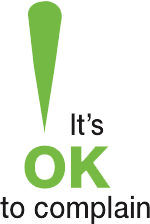Suggested content below is for service providers to include in their newsletter, updates or training from CEO/Managers/Quality and safeguarding teams about the Safe Mealtime poster and the importance of mealtime supports.
Optional image for content 
Safe Mealtimes
Remember it is always better to be safe than sorry. If you see the signs you must do something – your actions could save a life.
How we support a person during mealtimes could save a life. Take a moment to reflect on one of the many decisions we make when eating a meal. For example, we determine the amount of food we put in our mouth and when we load up our fork again to repeat that action. Imagine someone else doing that for you. While it can be a pleasant experience, if the support is actioned carelessly or too quickly, it can be uncomfortable and dangerous to the person with disability.
How we support people, including the care and attention we bring to this interaction, makes all the difference to a person’s wellbeing and safety. When we are attentive, these actions can help reduce the risk of choking and aspiration pneumonia which can lead to death. While the responsibility of support workers is significant, the steps to make mealtimes safe are simple.
When supporting people during mealtimes always follow the person’s mealtime support plan.
The mealtime support plan has important information included such as consistency of food and drink, amount to be offered, and other specific requirements for that person to make mealtimes safe and enjoyable. People should get their mealtime support plan reviewed regularly by their speech pathologist, at least once per year.
- Do you know where the person’s mealtime support plan is located?
- Is there a date on the plan and when was this last reviewed?
- What do you think would trigger a mealtime support plan review?
- Do you know who to contact about getting a person’s mealtime support plan reviewed?
If you’re not sure ask (enter position/name)
Before you start assisting with meals remove any unnecessary distractions. This could include turning off the TV, clearing the space and avoiding loud noises in the dining area.
Always follow these three steps:
- Check the person is alert and sitting as upright as possible
- Offer small amounts of food
- Wait for food to clear from the person’s mouth before offering more
Do not leave people on their own while eating or drinking if their mealtime support plan advises that they are to be supervised.
Getting help
If you observe any of the following signs the person you are supporting may need urgent attention. If you are not sure, immediately call for help.
- Difficulty swallowing
- Choking or gagging
- Persistent coughing
- Bringing food back up
- Wet ‘gurgly’ sound, voice or breathing
In an emergency contact ambulance 000
For non-emergencies, contact
- general practitioner
- speech pathologist
- Nurse on Call 1300 60 60 24
- [enter – team leader/position details here]
If you have any questions please speak to your [enter details – eg team leader].
Let’s talk about safe mealtimes – a resource for meetings. We encourage you to talk about safe meal supports during your regular team meetings and as part of your ongoing professional development. This simple one page list of prompts for discussion.
Let’s talk about safe mealtimes in PDF
Let’s talk about safe mealtimes in Word
Download and print the safe mealtime poster. The Disability Services Commissioner has developed a poster which outlines steps to follow when supporting people during mealtimes. It covers what is written in this article and can be easily displayed in a prominent position like kitchen and dining areas. You can download Safe Mealtime poster A3
We thank you for your commitment and dedication to all people with disability in receipt of your services. If you have any queries please speak to your enter details – eg direct supervisor, team leader or quality safeguards person
To find out more about the poster and why it was created DSC article Safe Mealtimes – new resource for staff














